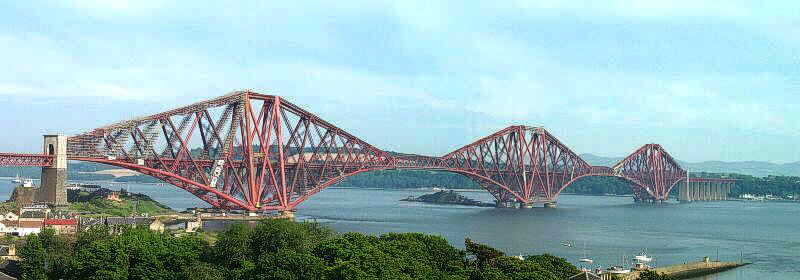|
The Forth Railway Bridge took eight years to build and was the world’s
longest bridge at the end of the 19th centuring. Measuring over
1 mile or 1600 metres in length, as a cantilever bridge it remains
second only to the Quebec bridge completed in 1917. The sheer scale of
its cantilever design with 54,000 tons of steel made it an engineering
wonder and it opened the way for a much-needed east-coast rail line to
run from London to the north of Scotland. History relates that when the
engineer who built it, Benjamin Baker, was askedhow long the bridge would
last, he replied: "For ever—if you look after it." Repainting of the bridge
has been continuously carried out ever since, and a well used saying to
describe a never-ending task has arisen from this practice. A special
paint was created for the Forth Bridge, which has been used since 1890,
and gives the bridge its orange colouring.
Looking slight by contrast, the more modern road bridge is a suspension
bridge. Its main towers are 152 m (500 ft) tall, but it is shorter in
length than the railway bridge, at just over 1 km or 1100 yards. It provides
a much-needed vehicular link between north and south Scotland.
Both bridges emphasize the importance of the Forth crossing, where a
ferry had run for 800 years until bridge design advanced sufficiently
to provide alternatives. In their diverse ways the two Forth Bridges provide
fine examples of engineering ingenuity and scale.
|
